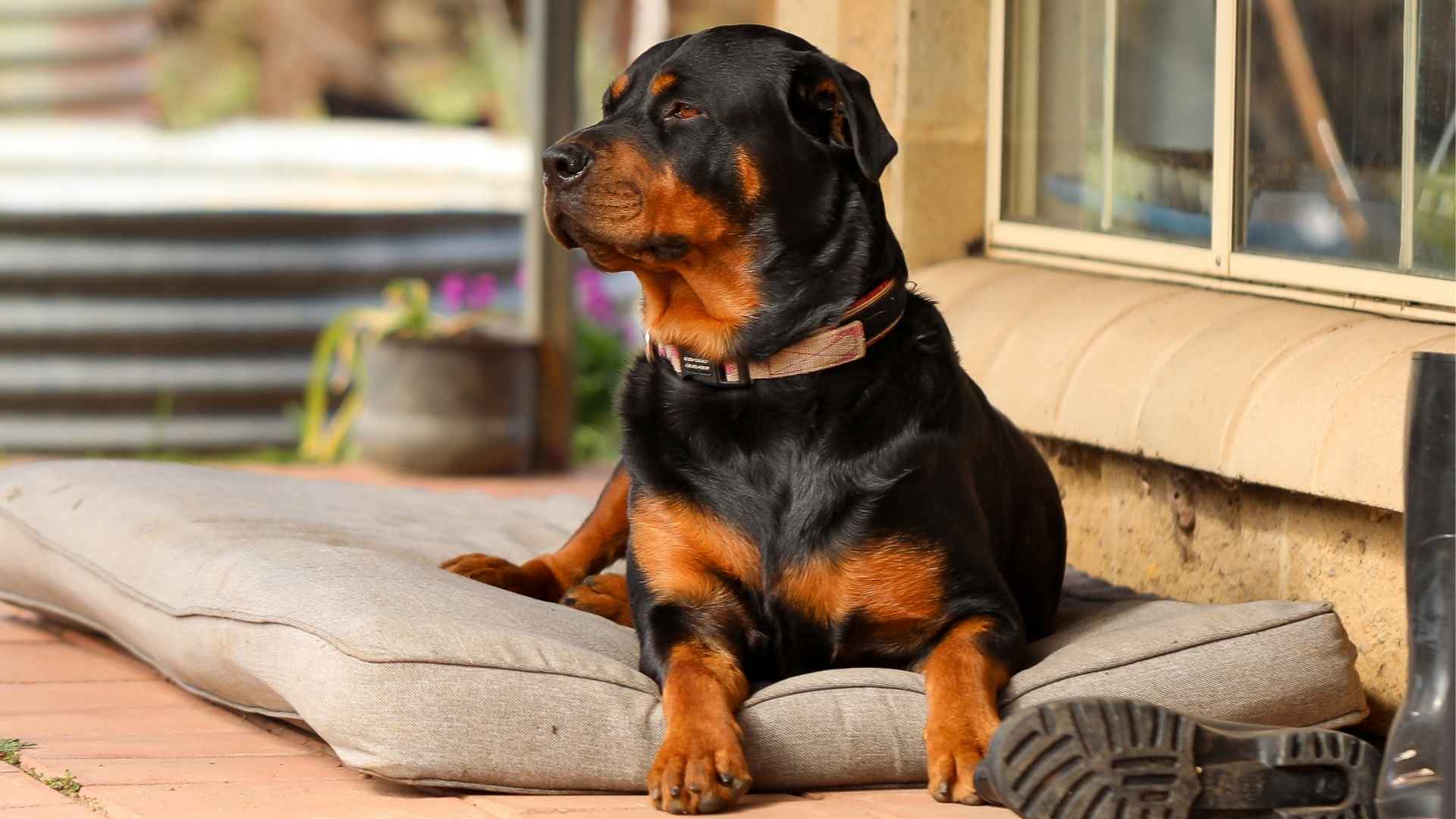Some dogs rely on muscle. Others rely on their brains. The best guard dogs use both, blending physical power with sharp decision-making that places them step ahead of anyone who doesn’t belong. These aren’t just bark-and-chase types. They evaluate, watch patterns, and respond only when needed, often with unnerving precision.
If you’re looking for a dog that’s more than just a visual deterrent, these breeds offer true strategic protection. They don’t just react to movement, they interpret it. Their intelligence doesn’t make them unpredictable; it makes them capable of adapting, anticipating, and protecting with intent.
This list is for those who want more than brute force in a security companion. These dogs are alert, controlled, and often able to outmaneuver intruders before a situation escalates. With the right handling, they are both dependable and exceptionally difficult to outsmart.
Worth knowing:
• These dogs need clear leadership and structured routines
• Mental stimulation is as important as physical exercise for their well-being
Let’s meet the breeds whose minds are as sharp as their senses.
Guard Dog Breeds That Outsmart Even Smartest Intruders
1. Belgian Malinois
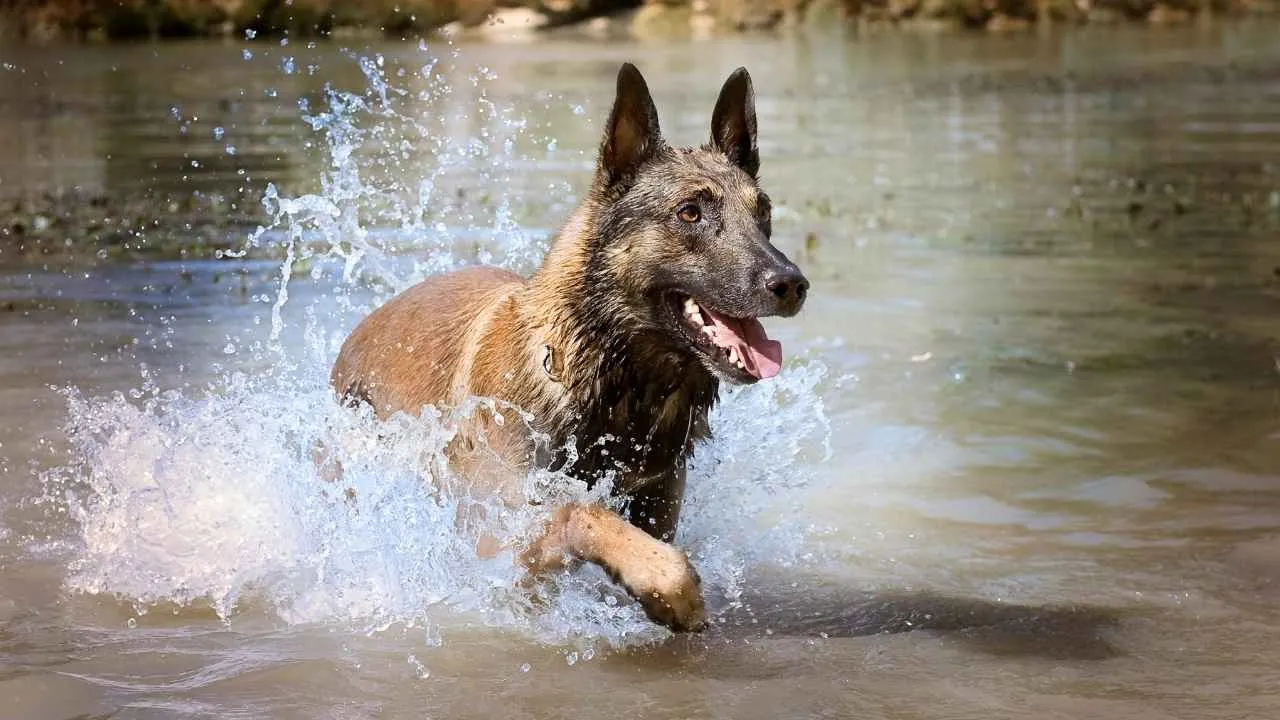
Belgian Malinois are built for split-second decisions. Their reflexes are sharp, but what sets them apart is their ability to process intent, watching not just what someone is doing, but how they’re doing it. That attention to detail makes them one of the few breeds that can out-think an intruder before contact.
They don’t bark much. Instead, they calculate. Even at rest, a Malinois is monitoring every corner of its space, ears alert, body balanced. This breed doesn’t need to be triggered—they live in readiness.
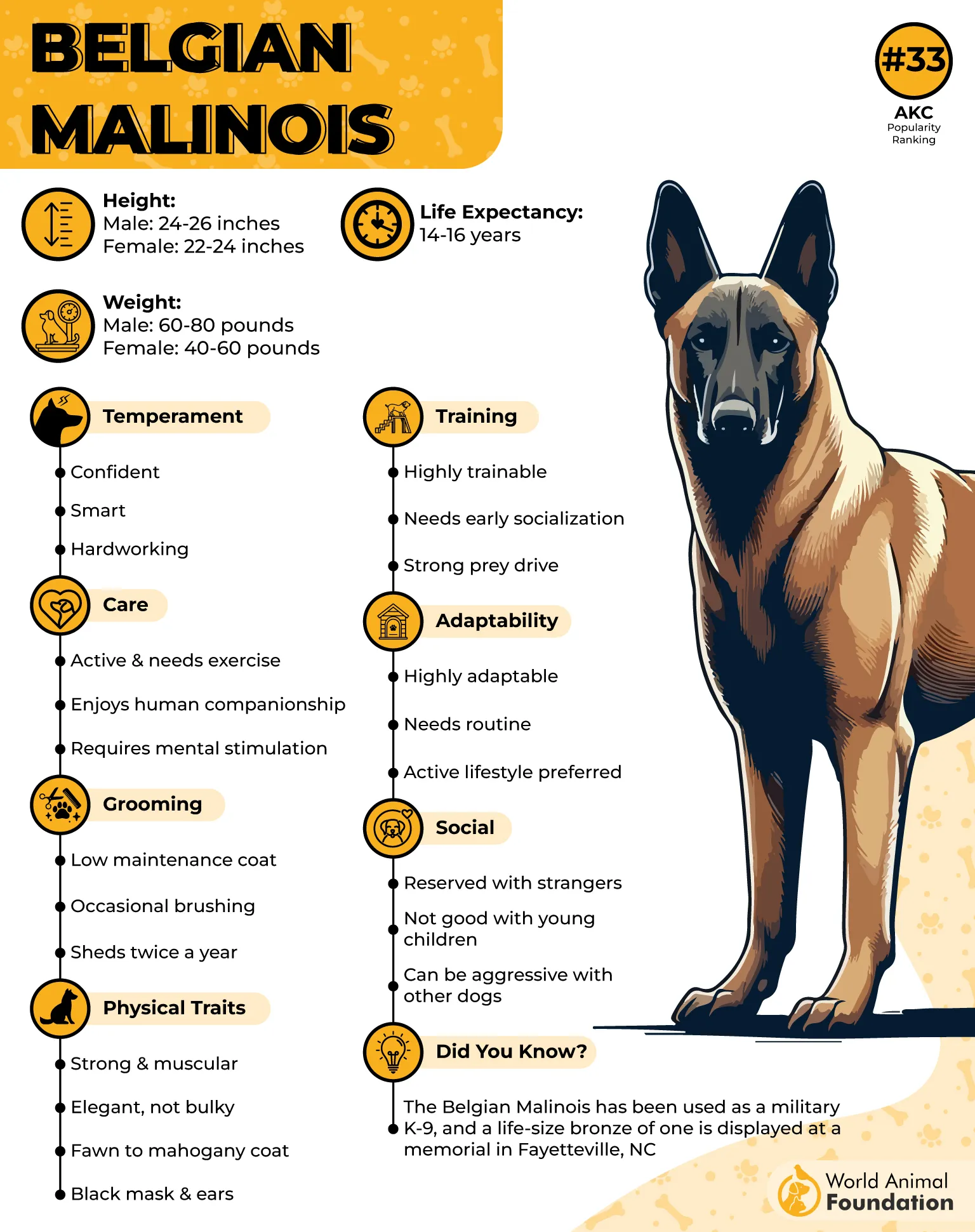
Though often associated with military dogs, their roots are in herding. Originally bred to manage livestock, their job demanded both obedience and quick independent judgment. Those skills were later adapted for tactical environments.
Their brains move fast, and so must their training. Repetition isn’t enough—they need problem-solving. As PetMD notes, without proper training, their energy becomes intensity, and their instincts become noise.
A guard dog bonds closely with its handler, but a Malinois bonds with purpose. Their trust is structured, their affection measured, and their loyalty unwavering once earned.
Quick Tips
Train with real-life simulations, not just commands
Use scent-based and movement-based challenges to engage them
Limit chaotic home settings—they absorb tension immediately
2. Cane Corso
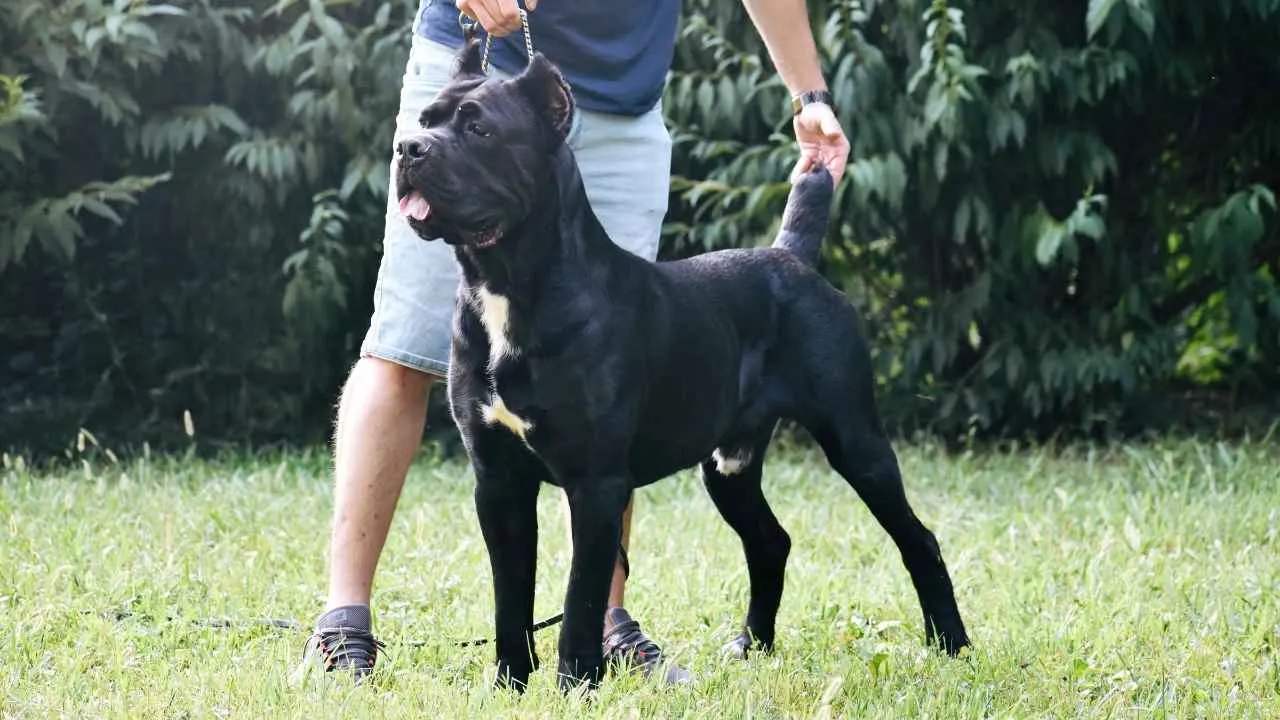
The Cane Corso doesn’t react loudly. It observes with precision, reserving energy for when action matters. Their calm posture hides how quickly they can move when they determine something is wrong. They’re not easily startled, and they don’t waste movement.
One of the most powerful guard dogs, the Corso is built for decisive encounters. Their strength is matched by self-control, which means they’re unlikely to bark without reason. But when they do engage, it’s sudden and absolute.
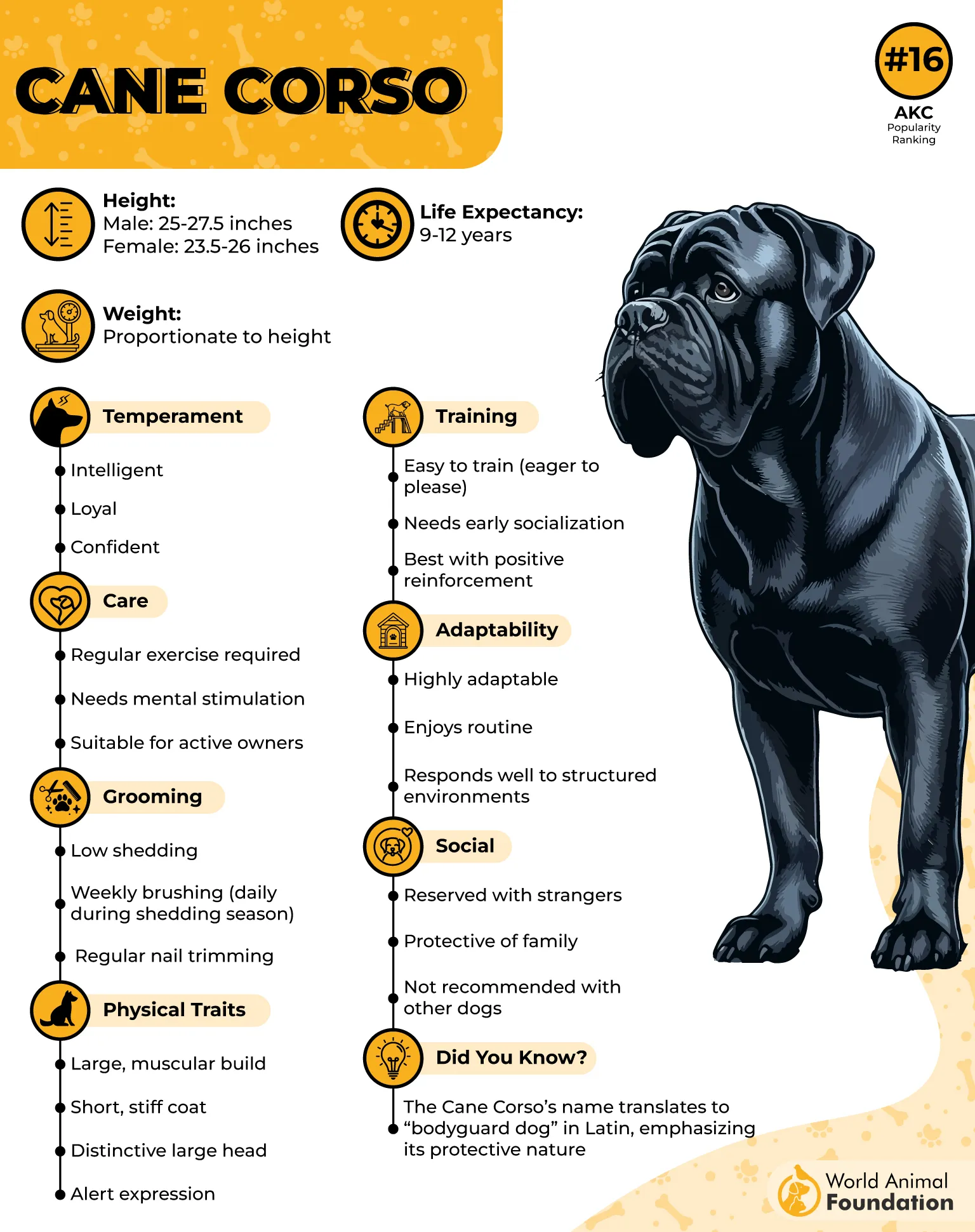
They were originally bred to serve as catch dogs and estate protectors, giving them a unique mix of presence and discernment. Their drive to protect is rooted in their understanding of boundaries—who belongs, and who doesn’t.
Their behavior reflects their sense of duty. Cane Corsos monitor their space, watch entry points, and keep close to family members without being clingy. Structure brings out their full potential as excellent guard dogs.
With proper training, they become both defenders and anchors—rooted, clear-minded, and impossible to surprise.
Quick Tips
Establish clear access boundaries indoors and outdoors
Practice non-verbal cue work—they’re highly receptive
Introduce them to new environments with structured walk-throughs
3. Bullmastiff
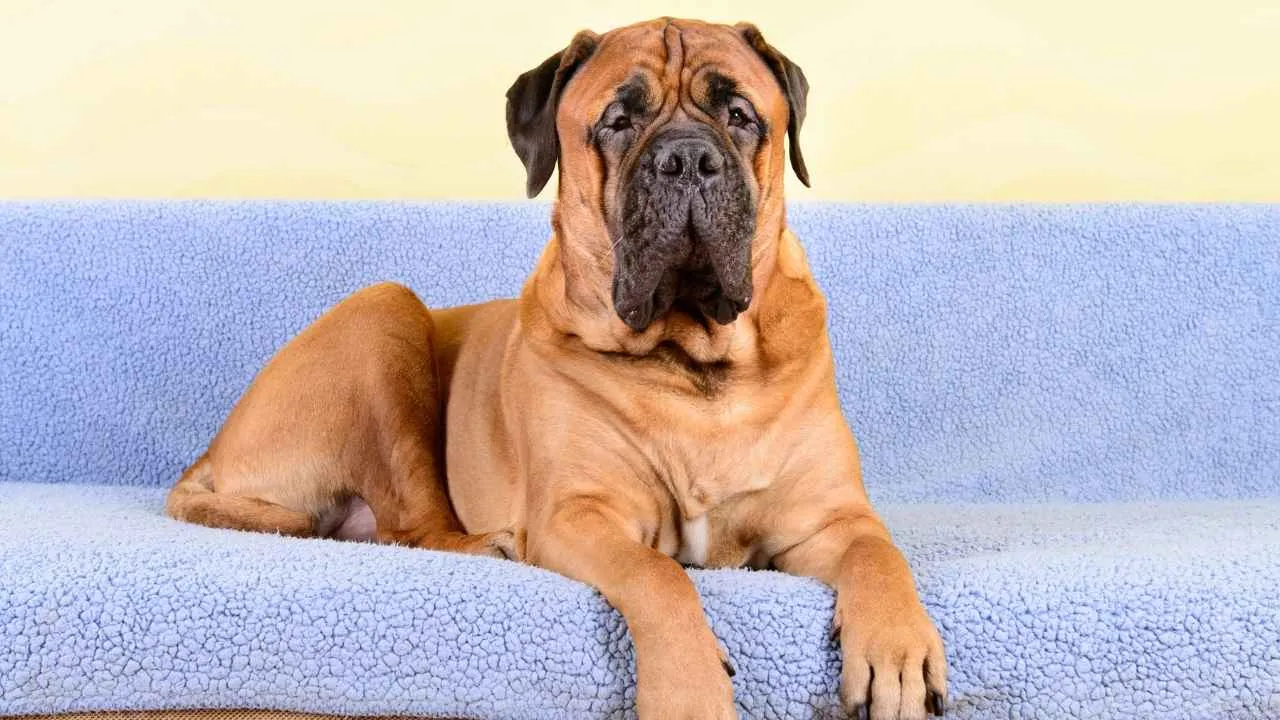
The Bullmastiff carries weight, not just physically, but emotionally. Their presence can fill a room with quiet authority. They don’t scan nervously or bark at every sound; they wait, watching with deep stillness that unnerves strangers more than noise ever could.
Beneath their calm exterior is a powerful pup that boasts tremendous strength. Their size is only part of the equation—the rest is control. They move slowly until they don’t, responding with speed that surprises even experienced dog owners.
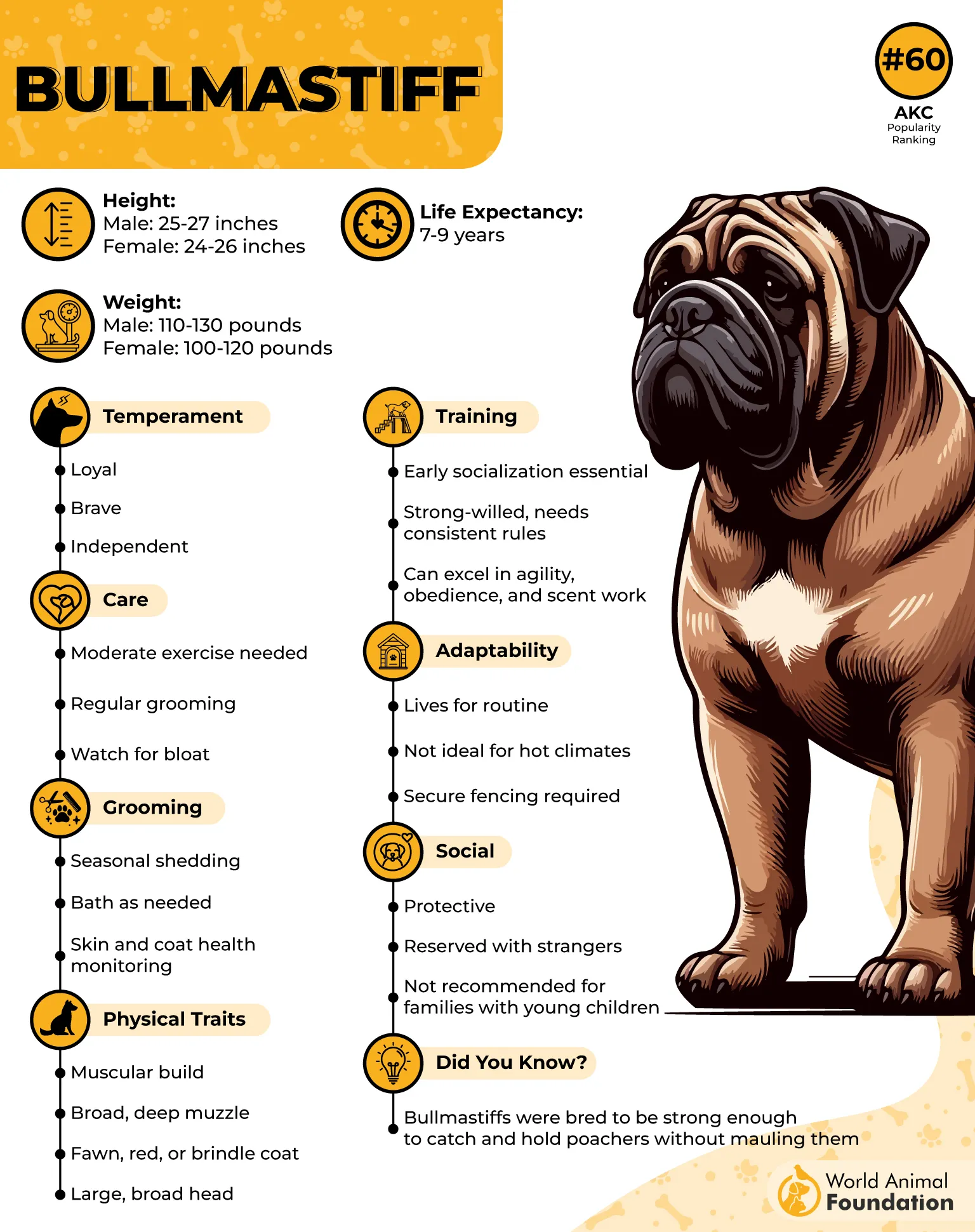
This breed was developed to patrol large estates and track intruders silently. That origin gave them discipline, not recklessness. Bullmastiffs understand restraint. They protect first by blocking, then by holding.
Bullmastiffs are family dogs that need structure and early social exposure. Left untrained, their natural drive to deter potential intruders can become overly intense or misdirected.
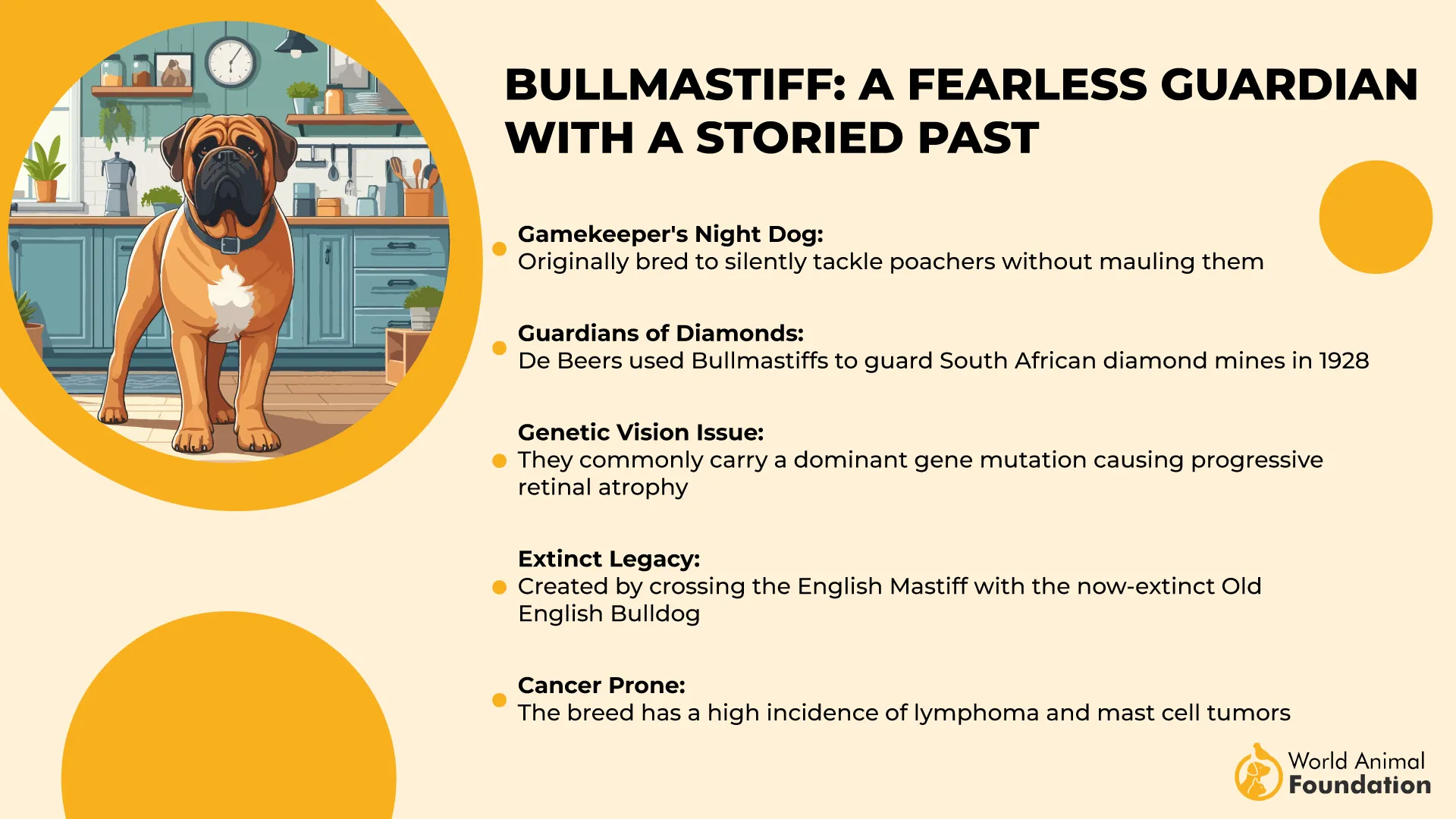
They form a strong bond with their humans, especially when raised inside the home. While they may look stoic, their protective instincts stay close, often between the door and the people they care about.
Quick Tips
Introduce controlled meet-and-greets during their first year
Reinforce barrier-based commands (“stay,” “wait,” “block”)
Prioritize short daily drills over extended, repetitive sessions
4. Rottweiler
Rottweilers don’t just observe—they evaluate. Every movement, voice shift, or opening door gets logged by their sharp, confident eyes. Their loyalty runs deep, but it’s their ability to pause and analyze a situation that makes them so difficult to fool.
These dogs have an impressive physical presence, but they rarely rely on it unless needed. A Rottweiler would rather stand still and block your path than lunge first. They want clarity before confrontation—and when they get it, they respond instantly.
They were originally bred as cattle drovers and guardians, managing large animals and valuables without losing control. That heritage gives them a composed confidence and resistance to panic, even when environments shift quickly.
As AKC notes, they are powerful dogs that require consistency and assertive guidance. Training helps sharpen their already excellent judgment. Without structure, their protectiveness can become unpredictable or overly suspicious.
Rottweilers are best when raised as part of the household. They take cues from family dynamics and hold a steady position between alertness and calm, never fully disengaged, even at rest.
Quick Tips
Avoid harsh correction—use clear boundary reinforcement instead
Teach layered commands for situational variation
Offer protective tasks (e.g., “check” commands) to satisfy instincts
5. Doberman Pinscher
Some breeds learn commands. The Doberman learns patterns. They notice habits, pick up on routines, and recognize disruption faster than most humans. Their memory, spatial awareness, and people-reading ability make them super smart pups—intelligent enough to see through most tricks.
Their presence alone causes hesitation. Sleek, fast, and intensely focused, Dobermans react with purpose, not panic. They don’t pace nervously. They wait, eyes fixed, reading intent like a map.
Once used extensively as protection and police dogs, the Doberman retains a unique blend of strength and grace. They don’t lumber—they cut through space like they’re measuring it. Their thinking is visual, strategic, and often surprisingly calm.
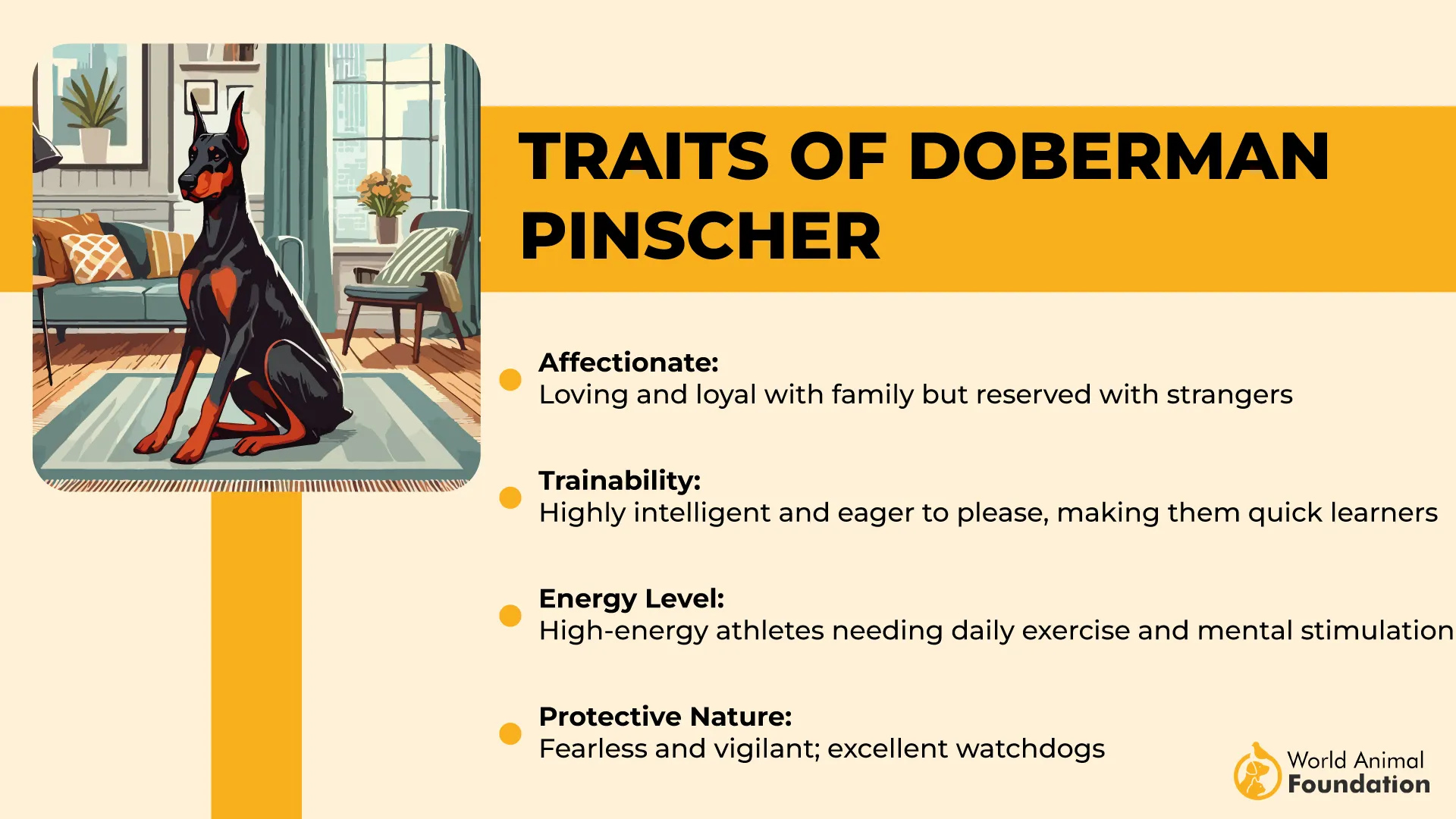
According to WebMD, this energetic breed requires mental work as much as exercise. Physical drills help, but real growth comes from problem-solving tasks and structured roles.
They are excellent watch dogs when given guidance and purpose. Without either, their instincts can spill into overactivity or suspicion.
Quick Tips
Train through visualization-based commands (e.g., tracking, “go look”)
Maintain daily mental puzzles to reduce overstimulation
Limit exposure to crowded, overstimulating spaces during early development
6. Akita
The Akita’s guard style is not loud—it’s personal. This breed watches from behind the scenes, storing impressions and alerting only when they’re certain something’s off. They don’t bark to hear themselves. They bark because something doesn’t align.
Their presence is hard to ignore. Thick coat, silent steps, and steady posture—these dogs broadcast calm authority. Their intuition builds over time, keyed to their handler’s tone and rhythm.
Originally bred to protect royalty and hunt in harsh conditions, they were trained to move with patience, not force. Their intelligence is filtered through loyalty and silence. It’s not about being the first to respond—it’s about responding with precision.
They require socialized early routines and careful introductions to strangers. When overexposed or undertrained, their sensitivity can become rigidity. But when guided clearly, they become a powerful guardian without chaos.
The Akita forms a strong bond with their inner circle, and they’ll track changes in that circle more closely than anyone else.
Quick Tips
Use calm, tone-based redirection for undesirable behaviors
Introduce unfamiliar faces slowly and without physical pressure
Practice long-lead boundary drills outdoors for focus and safety
7. German Shepherd
German Shepherds don’t just defend—they interpret. Every detail of their environment is registered, filed, and ready to be used if something shifts. They don’t guess; they study. That calculated awareness is what makes them such a great guard dog in both homes and professional settings.
This breed operates with purpose. Even during downtime, they remain alert, tracking movement, scanning faces, and gauging tone. It’s not restlessness. It’s readiness. Their protection comes not from reactivity, but from preparation.
Originally used for herding and property defense, their role quickly evolved into something broader. From military bases to suburban homes, they’ve shown an unmatched ability to adapt to complex roles while maintaining control.
Their thinking isn’t impulsive—it’s sequential. As PDSA explains, they’re often preferred by dog owners looking for confident, structured protection that balances loyalty with logic.
Their bond forms quickly, but it deepens with shared experience, not just time. Once they know your routine, your voice, and your pace, they start guarding the edges of it like a perimeter.
Quick Tips
Use layered command sequences to build confidence in new situations
Limit free-roaming during the early months to build boundary awareness
Reinforce observation drills (e.g., “watch,” “wait”) to refine control
Conclusion
These dogs don’t just bark—they calculate, adapting like seasoned protection dog professionals to changes in space, tone, and posture. Many come from purebred dogs with deep working dog histories, where every movement served a purpose and every still moment meant control. Despite their strength, several are also wonderful family pets with loyal and energetic traits that extend beyond defense into warmth.
Breeds like the German Shepherd are recognized by the American Kennel Club for balancing obedience with a muscular dog’s confidence, while others like Puli dogs remain lesser-known but equally focused. When properly trained and socialized, even dogs with a bad reputation often become gentle family pets, forming bonds with even kids and becoming the family protector without losing alertness.
The ability to deter, without chaos, defines the perfect dog for homes that need control with heart. Whether you’re choosing from common breeds or natural herders, these dogs bring more than physical power—they bring decision-making. And for a tight-knit family, there may be no stronger peace of mind than a smart, focused dog watching the door.


